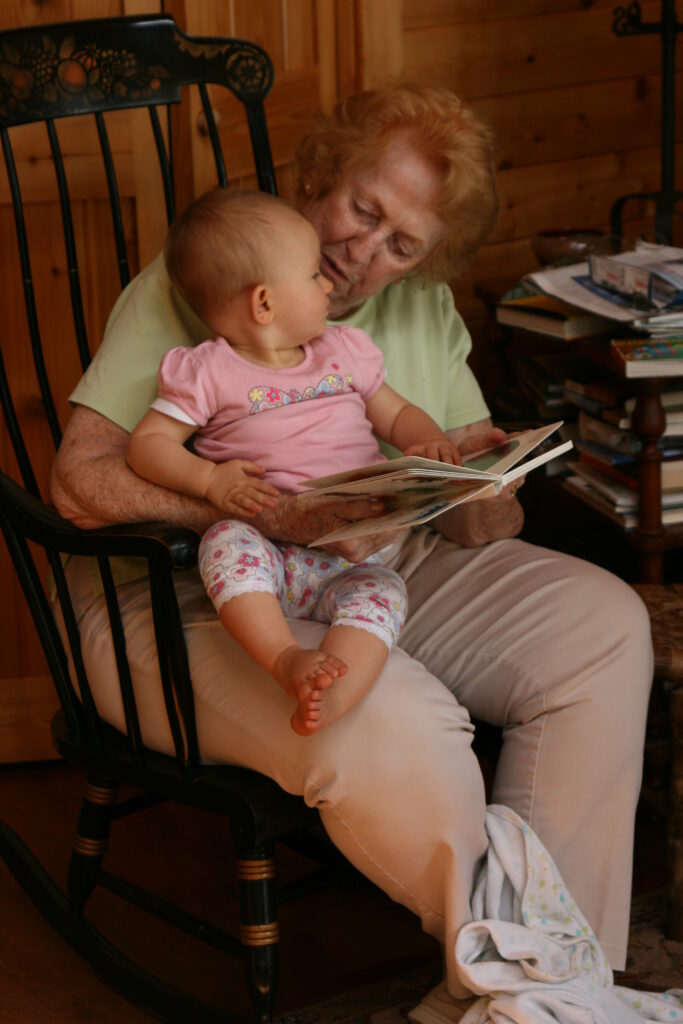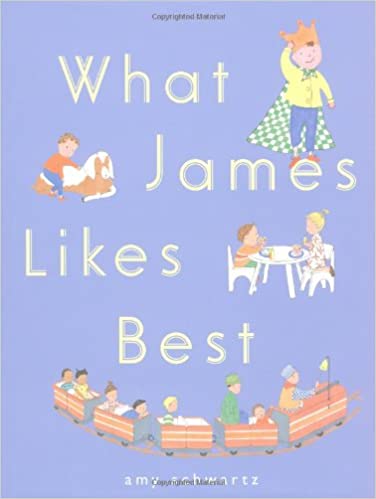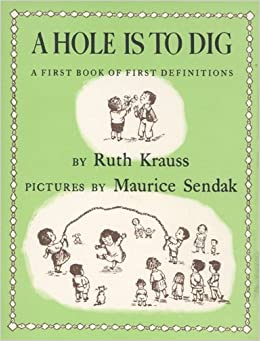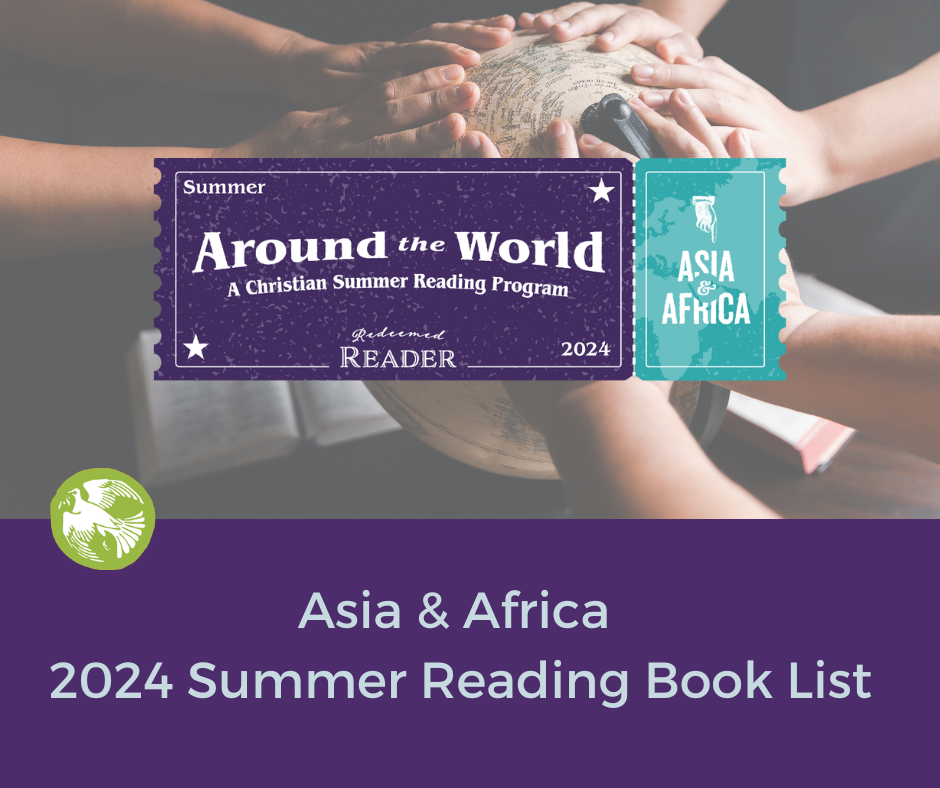Editor’s Note: November is National Picture Book Month! Participants in our “Honey for a Child’s Heart Read-Along” are considering that topic in chapters 13 and 14. Gladys Hunt mused further about picture books in a series of blog posts, exclusively published here.

Some thoughts about picture books
Originally published on the Tumblon website, July 26, 2009
We take for granted the amazing combination of words and pictures in story books for children. Words alone can create all sorts of delight; they can help you see and feel and imagine. Words tell stories and help us understand. Words rightly used are power. Swedish poet, Helga Henschen, said it beautifully when she wrote,
words can become suns
words can become rivers
words can open gates
and build bridges
words can overthrow tyrants
if enough of us
arm ourselves with words
Pictures, on the other hand, tell stories, evoke laughter, outrage, happiness and give us another kind of information. When the right words are combined with the right pictures, something magical happens that is a gift to the reader. In a sense each is half the story—the pictures and the words. But the sum of the whole is greater than its parts.
Each is half the story—the pictures and the words. But the sum of the whole is greater than its parts.
Picture books are important to children and parents, but I wonder if you have ever thought about all that goes into a successful book. I mean a really extraordinary book. First, imagine that two visions have to merge and become one book. The artistic style of a book must capture the intent of the author of the words. A picture book text is not complete until the artist is finished with the pictures.

A few authors are gifted both with words and pictures. I think of William Steig who tells his stories so skillfully using both gifts. Another is Kevin Henkes and James Marshall comes to mind. I like Amy Schwartz’s What James Likes Best. With uncluttered illustrations from a little boy’s life, she offers open-ended questions to ask the readers what they liked best. Preschoolers never tire of making the choices Schwartz provides with her illustrations and her words. Look for these author/illustrators and others like them.
But most picture books begin with words, and the author has to trust that an artist will say with pictures what was originally imagined as the words were written. What an act of faith to let a story go into the hands of an editor, who is then charged with finding the right illustrator who can make the book say what the author had in mind!
Think of the possibilities, for example, for illustrating a nursery rhyme.
Hey diddle, diddle, the cat and the fiddle,
The cow jumped over the moon;.
The little dog laughed to see such a sight,
And the dish ran away with the spoon.
No two illustrators will handle this in the same way. All kinds of decisions need to be made by the illustrator. What kind of a cat? Where is he playing his fiddle? Is he in an orchestra or a solo performer? What kind of cow? Is the moon full or half? What kind of dog? Are the dish and spoon pictured as elopers or simply a dish and a spoon with legs? What is the landscape for this bizarre, nonsensical rhyme? How heavy and graceful are the lines? How does the artist display the humor of this situation?
Well, that’s just an old rhyme that anyone could take a crack at, but what if you were an author with a new story and you were dependent on an illustrator you might not even know, someone the editor was going to choose for you? Just thinking about this should make you appreciate what goes into making a really good picture book.

Imagine how delighted Ruth Krauss must have been when Maurice Sendak drew his charming illustrations for A Hole is to Dig or her loveable A Very Special House. It’s difficult to think of anyone else doing those pictures which enhance the charm of her words.
The author’s words have to leave some space for the illustrator to help tell the story; otherwise there would be no combination magic. And the illustrator must tell the same story that the author does. When Gene Zion wrote his first Harry book he began this way, “Harry was a white dog with black spots who liked everything, except…getting a bath.” I wonder whether Zion’s idea of the dirty dog matched the one drawn by Margaret Bloy Graham. Or was he thinking of a different breed—maybe a Dalmatian—and what kind of spots did he have? The series is a winner because Graham knew what kind of dog to draw. Zion left room for the illustrator to help make the story. He told only two things about the dog—that it was white with black spots and that it didn’t like baths. The next time you read this book notice how much space Zion gives to let Graham tell the story with him.
The author’s words have to leave some space for the illustrator to help tell the story; otherwise there would be no combination magic.
Good picture books do that. They have carefully honed word-choices. The writers have to keep chipping away at the words to make them as sparse and emotive and effective as possible—kind of like writing poetry. All good children’s books have memorable sentences as a result. This is a gift to the illustrator who enters into the story and tells it in a way that matches the author’s intent. Who can keep from loving a really good picture book!
I hope this blog helps your enjoyment of these creative works.
© Gladys M. Hunt 2008-10, reissued in 2022 with minor adjustments with permission of the Executor of the Literary Estate of Gladys M. Hunt (4194 Hilton SE, Lowell, MI 49331). Used by permission. All rights reserved.
Also at Redeemed Reader:
Resource/Review: See Megan’s thoughts on how to read words + pictures in Paul Zelinsky’s Rapunzel.
Stay Up to Date!
Get the information you need to make wise choices about books for your children and teens.
Our weekly newsletter includes our latest reviews, related links from around the web, a featured book list, book trivia, and more. We never sell your information. You may unsubscribe at any time.
Support our writers and help keep Redeemed Reader ad-free by joining the Redeemed Reader Fellowship.
Stay Up to Date!
Get the information you need to make wise choices about books for your children and teens.
Our weekly newsletter includes our latest reviews, related links from around the web, a featured book list, book trivia, and more. We never sell your information. You may unsubscribe at any time.
We'd love to hear from you!
Our comments are now limited to our members (both Silver and Golden Key). Members, you just need to log in with your normal log-in credentials!
Not a member yet? You can join the Silver Key ($2.99/month) for a free 2-week trial. Cancel at any time. Find out more about membership here.



